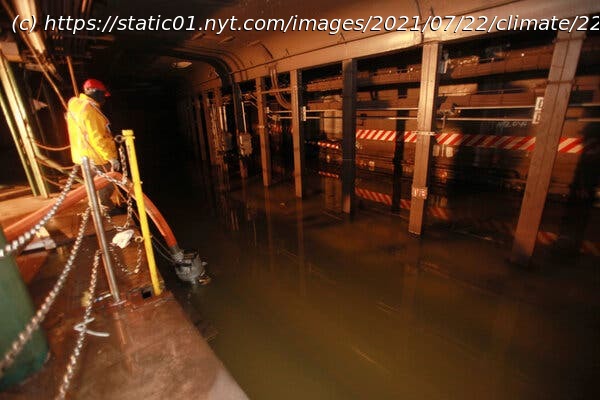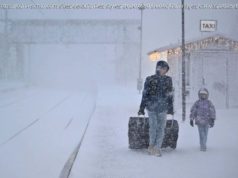Swift, deadly flooding in China this week inundated a network that wasn’t even a decade old, highlighting the risks faced by cities globally.
Terrified passengers trapped in flooded subway cars in Zhengzhou, China. Water cascading down stairways into the London Underground. A woman wading through murky, waist-deep water to reach a New York City subway platform. Subway systems around the world are struggling to adapt to an era of extreme weather brought on by climate change. Their designs, many based on the expectations of another era, are being overwhelmed, and investment in upgrades could be squeezed by a drop in ridership brought on by the pandemic. “It’s scary,” said Sarah Kaufman, associate director of the Rudin Center for Transportation at New York University. “The challenge is, how can we get ready for the next storm, which was supposed to be 100 years away,” she said, “but could happen tomorrow?” Public transportation plays a critical role in reducing travel by car in big cities, thus reining in the emissions from automobiles that contribute to global warming. If commuters become spooked by images of inundated stations and start shunning subways for private cars, transportation experts say it could have major implications for urban air pollution and greenhouse gas emissions. Some networks, such as London’s or New York’s, were designed and built starting more than a century ago. While a few, like Tokyo’s, have managed to shore up their flooding defenses, the crisis in China this week shows that even some of the world’s newest systems (Zhengzhou’s system isn’t even a decade old) can also be overwhelmed. Retrofitting subways against flooding is “an enormous undertaking,” said Robert Puentes, chief executive of the Eno Center for Transportation, a nonprofit think tank with a focus on improving transportation policy. “But when you compare it to the cost of doing nothing, it starts to make much more sense,” he said. “The cost of doing nothing is much more expensive.” Adie Tomer, a Senior Fellow at the Metropolitan Policy Program of the Brookings Institution, said subways and rail systems help to fight sprawl and reduce the amount of energy people use. “Subways and fixed rail are part of our climate solution,” he said. The recent flooding is yet another example of the kind of extreme weather that is consistent with changing climate around the world. Just days before the China subway nightmare, floods in Germany killed some 160 people. Major heat waves have brought misery to Scandinavia, Siberia and Pacific Northwest in the United States. Wildfires in the American West and Canada sent smoke across the continent this past week and triggered health alerts in cities like Toronto, Philadelphia and New York City, giving the sun an eerie reddish tinge.






